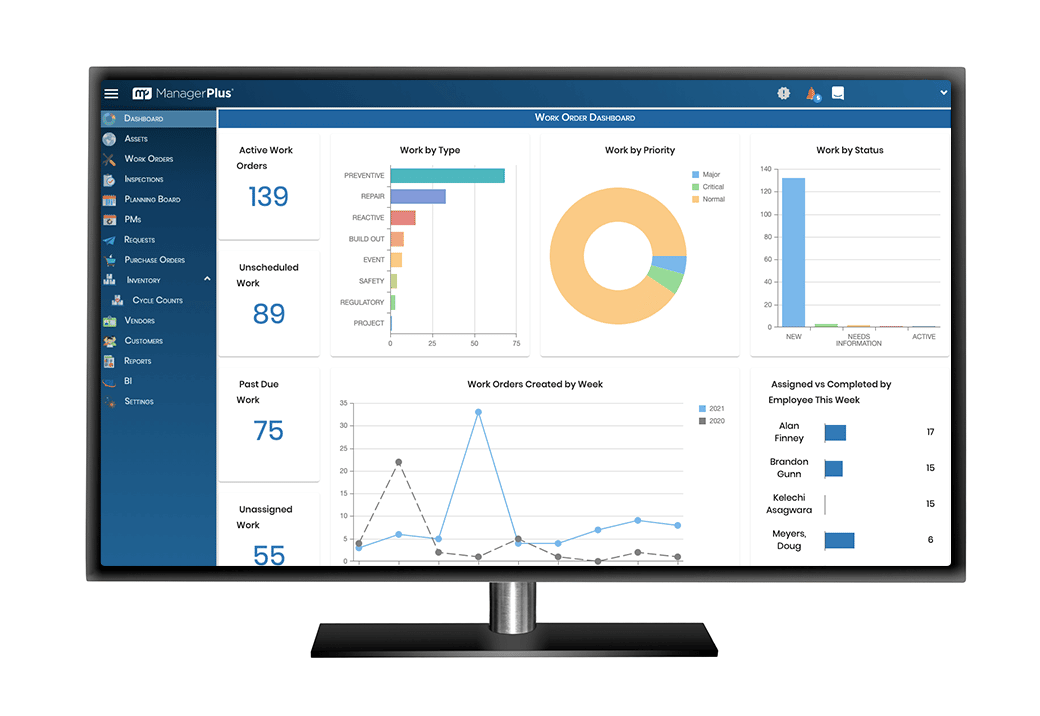There are many different ways to combine items and parts into finished goods, but which one is best for your products?
That all depends on the types of finished goods you sell.
What is discrete manufacturing?
Discrete manufacturing is a production process that creates finished products that can be counted and tracked as individual units. Production typically involves the use of other parts, components, and sub-assembly processes to manufacture the final product.
Examples of discrete manufacturing
Essentially any product that is a final good that can be counted, sorted, and tracked as an individual unit is made with discrete manufacturing.
Examples include:
- Vehicles
- Electronics (computers, smartphones, etc.)
- Appliances
- Clothing
- Furniture
The types of products made with discrete manufacturing typically fall into one of two categories:
- Low volume/high complexity
- High volume/low complexity
These two terms refer to the types of items themselves that are being manufactured. Low volume/high complexity items are products that are made in small batches but are highly complex products such as airplanes or medical imaging equipment. They often require partnering directly with the manufacturer during production to ensure quality standards and design specifications are met.
Manufacturing these items is a delicate process as the product must be tested at frequent intervals throughout assembly to ensure that no critical elements are broken, missing, or assembled incorrectly.
The other types of items are basically the opposite. These are items that can be produced in large volumes quickly and don’t require complex tools or processes to make. Think of items like nuts, bolts, etc. Production of these items can be scaled up or down to meet demand and any changes needed to the process can be implemented quickly and inexpensively.
Discrete vs. process manufacturing
Discrete manufacturing is taking a specific set of materials and assembling them into the finished product. It uses a bill of materials to specify the type and quantity of items needed to assemble the product. As mentioned above, generally the finished products could be disassembled back into the original parts if necessary for disposal or recycling.
Products made with discrete manufacturing often are made with component parts like nuts, bolts, screws, etc. These items are generally the smallest part of a product that cannot be distilled back into its raw materials. The nuts and bolts used to assemble a widget cannot easily be broken down back into their source materials, but the widget itself can be disassembled back into its separate components.
Process manufacturing, on the other hand, creates products based on a formula or recipe of ram materials combined to make a finished product. Process manufacturing items are not distinct individual units that can be sorted and tracked individually.
Common examples of items made with process manufacturing include:
- Food and beverages
- Cleaning chemicals
- Soap, shampoo, conditioner, etc.
- Oil and gas
Most products made through process manufacturing are items made in bulk from component items that cannot be easily identified once combined to create the final product.

Discrete manufacturing workflow
There are three different workflows within discreet manufacturing which are determined by when the customer places an order for the finished goods.
Made to stock – this is when you keep a stock of finished goods on hand and ship them out as customers place orders. Products made with this workflow are typically high volume/low complexity items that sell in bulk.
Make to order – in this workflow, you do not keep finished goods in stock and wait under customers place orders to begin manufacturing. Made-to-order items are often products that are highly complex and require significant upfront investment to manufacture such as airplanes.
Assemble to order – with these items, companies hold certain components in stock but do not assemble the finished product until the customer places the order.
The type of workflow your company uses depends on the final goods you make. Companies that make complex and difficult to manufacture items tend to use make to order and assemble to order workflows. Manufacturers who produce much smaller, easy to make, and inexpensive items use the made-to-stock workflow.
How to improve discrete manufacturing productivity
One of the biggest challenges of discreet manufacturing is that it depends on the individual needs of your customers, so manufacturers need to be flexible and able to quickly adapt to meet challenges.
Data is the answer. But not just data, the right data at the right time.
The more data and information you have on your assets and processes, the quicker you can make changes and adapt to customer demands.
The current age of Industry 4.0 is all about leveraging connected technology to gather as much data as possible on your assets and operations so you can discover inefficiencies and gain detailed insight into how well or how poorly your assets are performing.
The only way to use this data effectively is to use enterprise asset management (EAM) software to analyze your data and help you plug gaps in your operations.
EAM software helps you:
- Improve asset performance
- Keep equipment online longer
- Analyze costs
- Allocate resources efficiently
- Optimize inventory management
Start gathering the right data and leverage the power of EAM software to begin boosting your productivity.
Get more from your assets
Manufacturing is all about producing final goods quickly and accurately so you can sell as many as possible. That means ensuring your machines and equipment are producing at their optimal levels. With connected sensors integrated with EAM software, you get real-time data on how many widgets you’re making, how many failed units were produced, how much downtime you experience, and more. Analyze this data over time to make sure you’re improving and on track to hit your company goals.

Reduce downtime with preventive maintenance
Your assets can’t make products if they aren’t working. Some downtime is always necessary for regular maintenance, inspections, and so forth, but unscheduled downtime is just wasted money. Thankfully, almost all unplanned downtime can be prevented with preventive maintenance.
Preventive maintenance is all about using data from your assets to fix them before they fail. It’s like replacing the oil in your car. You know from the manufacturer and your mechanic that you’re supposed to change the oil every few thousand miles to prevent the engine from seizing up. Using the odometer in your car, you track your mileage until you reach the point where it’s time to change it.
You can apply the same strategy to your assets with EAM software. Using manufacturer recommendations or knowledge from your senior techs, build maintenance schedules for routine tasks to find and fix minor repairs before they snowball into major issues. Create customized work order templates for these tasks as well with checklists, user manuals, tips and tricks, and more so techs have all the information they need for every task.
See exactly where your costs are going
It’s hard to know where to cut costs if you don’t know what you’re spending money on in the first place. Tracking asset and maintenance data helps you see what assets and areas of your operation are costing you more than they should. If one asset is requiring more repairs each quarter than most of your other assets, there might be a larger problem going on.
Utilize your resources efficiently
Trying to manage maintenance schedules and get resources where they need to go with emails and spreadsheets is inefficient and time-consuming. With EAM software, you can attach inventory items, equipment, and more to each work order and technicians are notified instantly when they’re assigned a work order. Use the drag-and-drop maintenance calendar to quickly reallocate resources on the fly.
Optimize your inventory to always have the right parts
Good inventory management is about having the right parts in the right place at the right time, without paying more than you should. This is especially true in discrete manufacturing as you are assembling your final goods from a wide range of items. You need to make sure you always have enough of what you need, but that you’re not wasting money on items you don’t.
Many manufacturers don’t even use as much as 90% of their maintenance, repair, and operations (MRO) inventory every year which is potentially thousands of dollars that you’re just leaving on the shelf. With EAM software, you can track every item of inventory across your operations from the moment it’s received, until the moment it’s used, sold, or scrapped.
Plus, inventory levels are updated in real-time so you always know when it’s time to order more so you don’t have to buy in bulk just to try to get a good deal.
Next steps
Are you ready to improve productivity and boost your ROI? Implementing EAM software at your organization is easier than you might think. The best way to get started is by scheduling a one-on-one conversation with our experts. You’ll get a chance to share the challenges your company is facing, and our experts will help find a solution that’s best for you.
Executive summary
Discrete manufacturing is used to make final goods by combining component parts together into a finished product. It differs from process manufacturing in that the finished goods can be disassembled back into their original components if necessary whereas process manufacturing uses formulas and recipes to combine raw materials into goods that cannot be disassembled. Airplanes, vehicles, and furniture are all examples of discrete manufacturing.
Enterprise asset management (EAM) software can help you improve the productivity of your manufacturing assets by helping you:
- Keep equipment running longer with preventive maintenance
- Track parts and inventory more efficiently
- Analyze costs to discover ways to improve profitability
The best way to get started with EAM software is to talk to the those who know it best. Schedule a call today.


